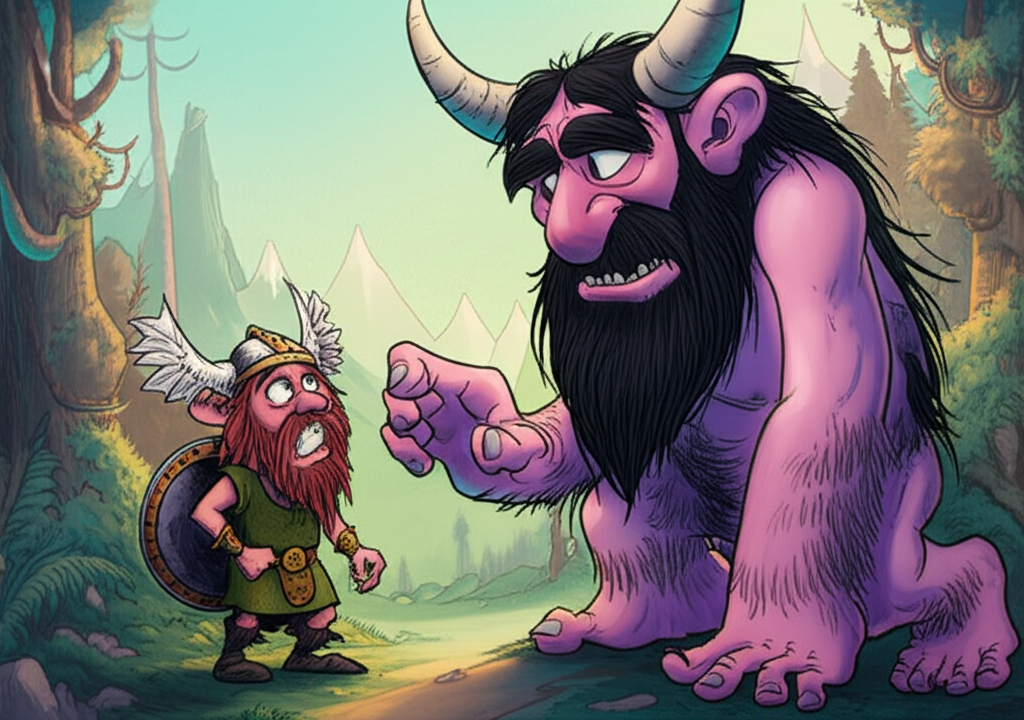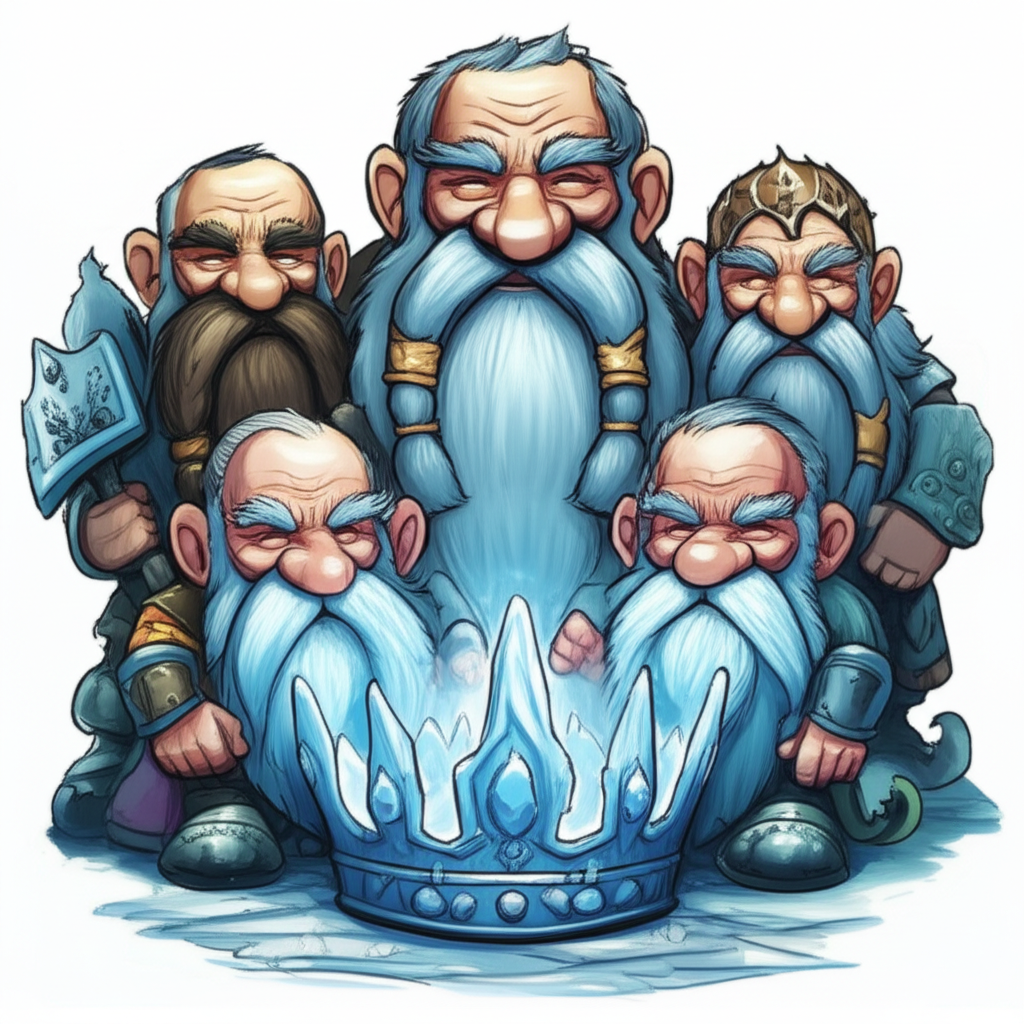From the frigid, windswept landscapes of ancient Scandinavia, where long winters etched deep into the land and the crackle of hearth fires offered scant comfort against the encroaching darkness, emerged a rich tapestry of myths and sagas. These were the stories of the Norse people, a culture deeply connected to the rhythms of nature, the ferocity of the sea, and the enduring struggle against the elements. Their worldview was one shaped by a pantheon of gods and goddesses, mighty beings who, while powerful, were also fallible, engaged in cosmic battles and subject to fate, much like the humans who told their tales. Among these ancient narratives, the tragic story of Baldr, the radiant god of light and purity, and the subsequent reverberations of his death, offers a profound glimpse into their understanding of life, loss, and the ever-present shadow of oblivion.
The myth of Baldr’s death, as preserved in the Eddas – the primary source of Norse mythology – hails from a period when oral tradition was paramount. These sagas were likely recited and sung around communal fires, passed down through generations, shaping the collective consciousness of a people who lived in a world where the sun’s return after winter was a matter of profound significance, and the concept of a benevolent, life-giving force was deeply cherished. The harsh realities of their environment, with its volatile weather and the constant threat of scarcity, likely fostered a deep appreciation for light, warmth, and life itself, making the demise of a god embodying these qualities all the more potent.
Within this rich mythological framework, Baldr stood as a figure of unparalleled beauty, goodness, and radiance. He was the son of Odin, the All-Father, and Frigg, the queen of the gods. Baldr was often depicted as possessing a dazzling light that emanated from him, a symbol of his inherent purity and his role as a bringer of joy and peace. He was beloved by all – gods and mortals alike – and his presence brought comfort and prosperity. He represented the ideal ruler, the embodiment of all that was good and desirable in the world. His immaculateness was such that he was seemingly invulnerable, a beacon of hope in a cosmos often teetering on the brink of chaos.
The narrative of Baldr’s demise is a poignant tale of betrayal and cunning. Loki, the trickster god, driven by envy and a deep-seated malice, orchestrated Baldr’s death. He discovered that the mistletoe, a seemingly insignificant plant, was the only thing that could harm the beloved god, as all other things in creation had sworn an oath to Frigg not to harm her son. Loki, through his deceitful machinations, procured this weapon and, during a game where the gods tested Baldr’s invulnerability by throwing various objects at him, he guided the blind god Hodr to cast the mistletoe spear. The seemingly harmless dart struck Baldr, and he fell, lifeless. The immediate aftermath was one of profound shock and sorrow that rippled through Asgard, the realm of the gods. The bright light that Baldr represented was extinguished, leaving a palpable darkness in its wake.
The grief that followed Baldr’s death was immense. Frigg, heartbroken, pleaded with the gods to retrieve her son from Helheim, the gloomy underworld ruled by the stern goddess Hel. Odin, in his despair, sent his son Hermod to journey to Helheim and beg for Baldr’s release. Hermod’s arduous journey through the dark and desolate realms of the dead is a testament to the Norse perception of the afterlife – a place of grim finality, where spirits were bound and rarely returned. Upon reaching Helheim, Hermod encountered Hel herself, a figure often depicted as gaunt and severe, with a cold, unfeeling demeanor. He relayed Frigg’s plea, stating that all beings in the nine worlds – both living and dead – wept for Baldr. Hel, however, agreed to release Baldr only if a single tear was shed for him by every living thing, signifying a universal mourning.
The gods then dispatched messengers across the realms, from the highest heavens to the deepest earth, to implore all creatures to weep for Baldr. Every being, from the smallest insect to the mightiest giant, shed tears of sorrow for the beloved god. But there was one exception: a giantess named Thökk, who refused to weep, claiming she had no love for Baldr. It was later revealed that Thökk was none other than Loki in disguise, his final act of malice ensuring Baldr’s permanent stay in the land of the dead. This inability to fully retrieve Baldr from Helheim, despite the overwhelming grief, underscored the inescapable nature of death and the finality that even the gods could not always overcome.
The symbolism embedded within the myth of Baldr’s death is multifaceted and deeply resonant with the Norse worldview. Baldr himself represented not only light and purity but also the cyclical nature of life and the hope for renewal. His death could be seen as a personification of the fading of the sun during winter, a period of darkness and dormancy from which a return to warmth and life was desperately awaited. Loki’s betrayal symbolized the ever-present threat of chaos and malevolence that could disrupt even the most ordered and benevolent systems. The inability to fully retrieve Baldr from Helheim spoke to the existential anxieties of the time, the fear of oblivion and the acknowledgment that some losses are absolute. The story also served as a moral compass, highlighting the destructive nature of envy and deceit, and the profound impact of loss.
In contemporary times, the myth of Baldr’s death continues to capture the imagination. It has found its way into a multitude of modern interpretations, from literature and poetry to video games and fantasy novels. Authors and creators often draw upon the tragic elements, the themes of betrayal, and the somber atmosphere of Helheim to craft compelling narratives. The figure of Baldr can be reinterpreted as a tragic hero, a symbol of lost innocence, or a representation of a dying ideal. Loki, the architect of the tragedy, remains a compelling archetype of the villain whose motivations are rooted in complex emotions like envy and resentment. The story’s exploration of the afterlife, though grim, also offers a foundation for exploring themes of mortality and the human desire for reunion and redemption.
It is crucial to reiterate that the story of Baldr’s death is a traditional narrative, a product of the imagination and cultural understanding of ancient peoples. It is a powerful example of how ancient cultures used storytelling to grapple with fundamental questions about existence, morality, and the natural world. As Muslims, we recognize that only Allah (SWT) is the true Creator and Sustainer of all existence, and that true divine power and dominion belong solely to Him. These ancient myths, while culturally significant and artistically compelling, do not represent divine truth. Instead, they serve as fascinating windows into the human experience, the enduring power of storytelling, and the rich tapestry of cultural heritage that continues to inform and inspire us today. The echoes of Baldr’s fall, though rooted in myth, remind us of the enduring human capacity for both profound sorrow and the persistent hope for light to eventually conquer darkness.





